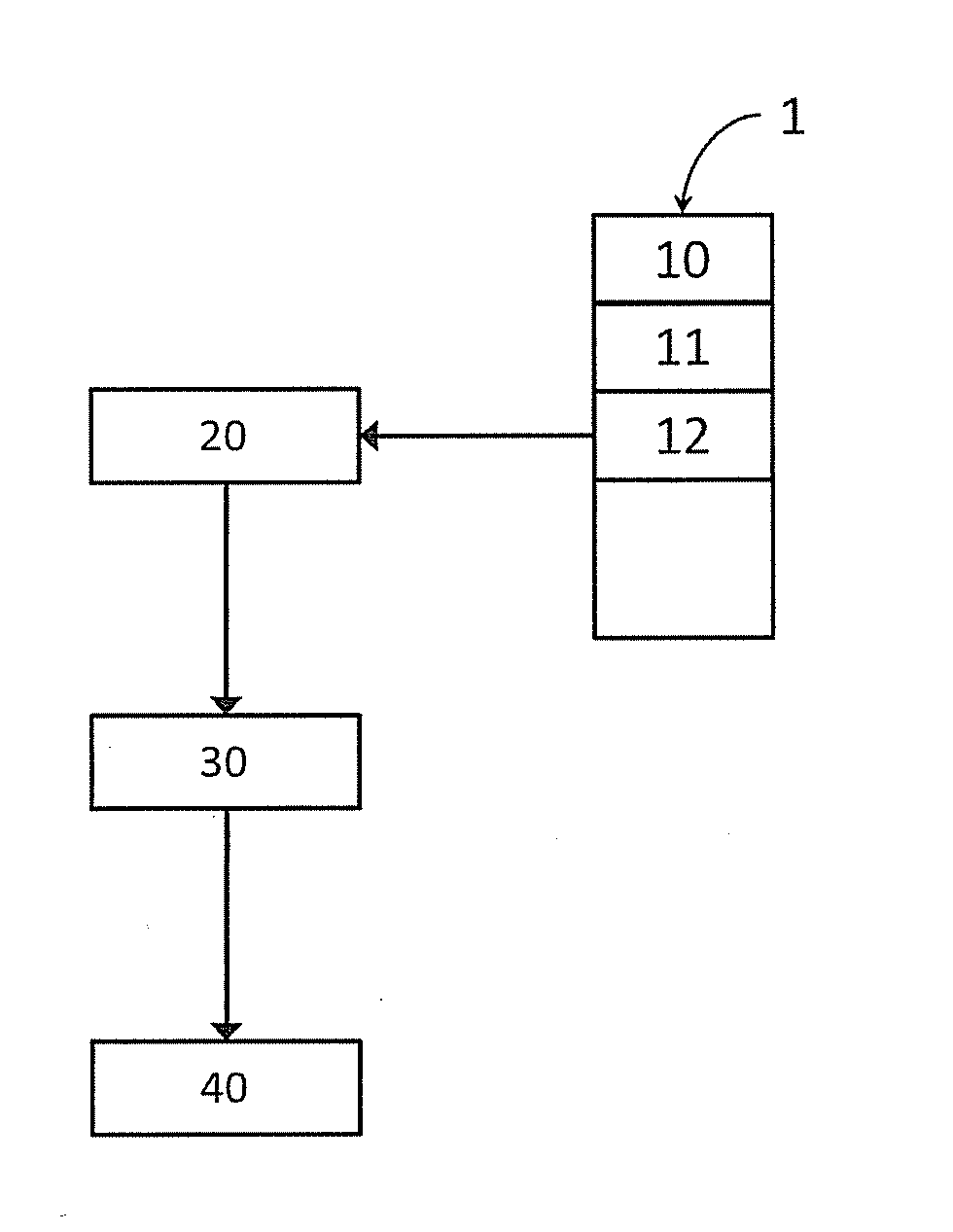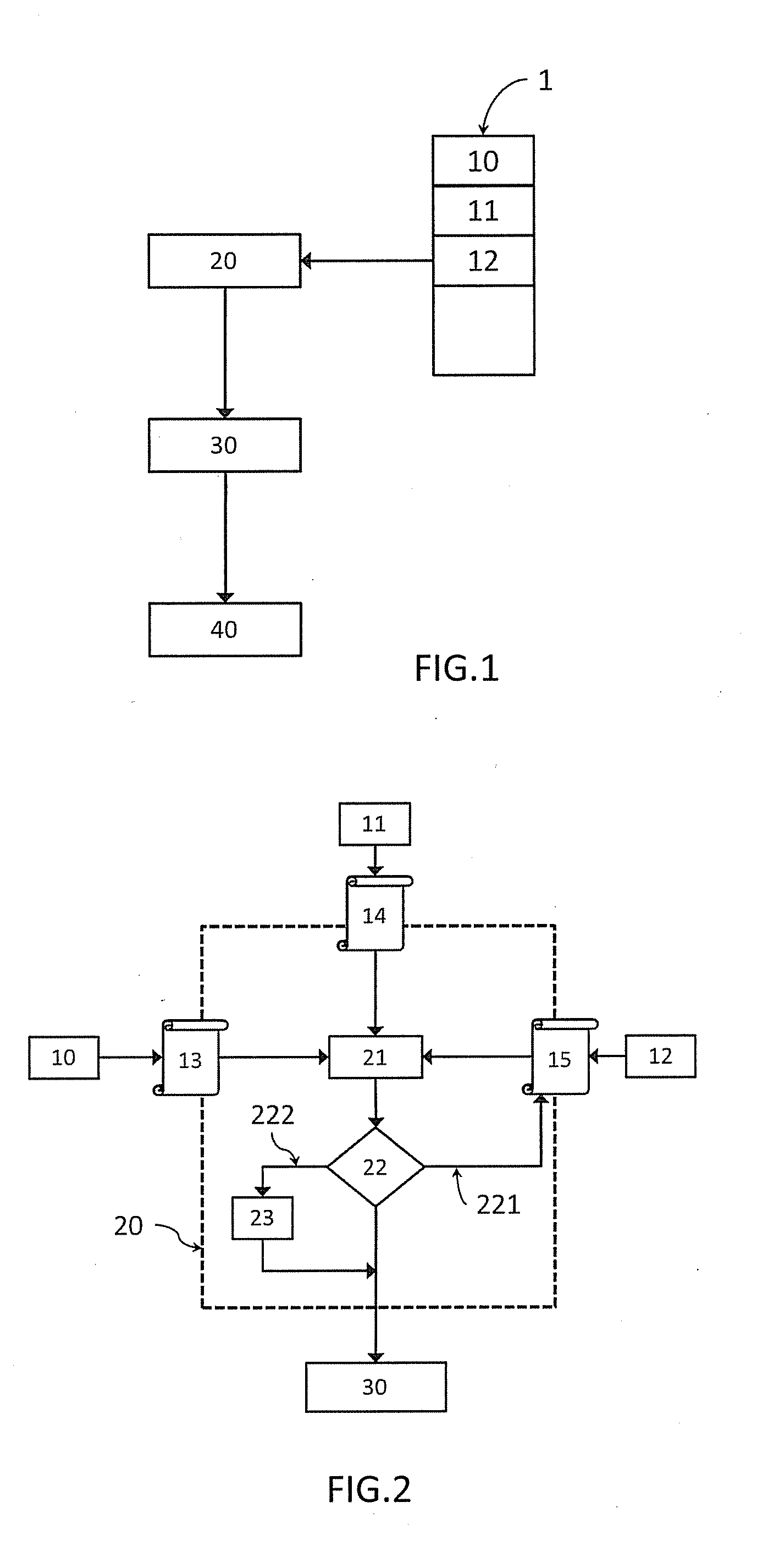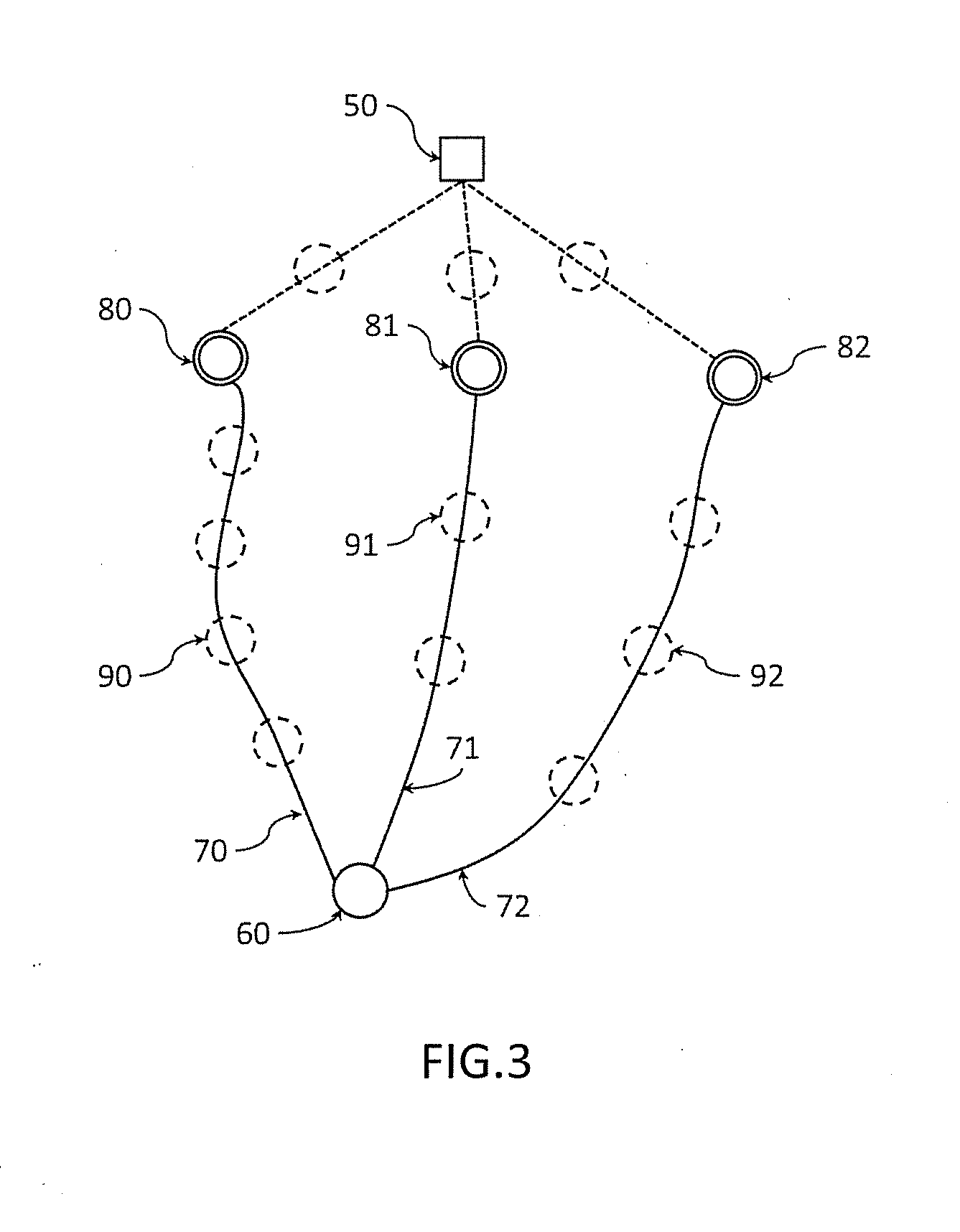Automatic management of timestamp-based synchronisation protocols
a technology of synchronisation protocol and timetamp, applied in the direction of transmission, time-division multiplex, electrical apparatus, etc., can solve the problems of large operating expense, complex task, static and conservative approaches are not well-suited to ubiquitous dynamic environments,
- Summary
- Abstract
- Description
- Claims
- Application Information
AI Technical Summary
Problems solved by technology
Method used
Image
Examples
Embodiment Construction
[0039]Various embodiments of methods and systems described herein may be performed in a packet-based network provided with a timestamp-based synchronization protocol such as IEEE1588V2, or NTPV4. In such networks, slave clocks are generally locked to a frequency reference within a predetermined frequency accuracy (usually around 16 ppb) at t=0which marks the initialization time of the herein described automatic management procedure of synchronization protocols.
[0040]Timestamp-based synchronization protocols describe temporal information exchange (with related methodologies) between distributed clocks in a segmented network into a Master-Slave synchronization hierarchy. Ordinary clocks operate as either a Master or a Slave and are located at the end points of the synchronization hierarchy paths which may include intermediate nodes of the underlying transport network. Routers, switches and repeaters are examples of such intermediate nodes, generally called network devices and which ma...
PUM
 Login to View More
Login to View More Abstract
Description
Claims
Application Information
 Login to View More
Login to View More - R&D
- Intellectual Property
- Life Sciences
- Materials
- Tech Scout
- Unparalleled Data Quality
- Higher Quality Content
- 60% Fewer Hallucinations
Browse by: Latest US Patents, China's latest patents, Technical Efficacy Thesaurus, Application Domain, Technology Topic, Popular Technical Reports.
© 2025 PatSnap. All rights reserved.Legal|Privacy policy|Modern Slavery Act Transparency Statement|Sitemap|About US| Contact US: help@patsnap.com



